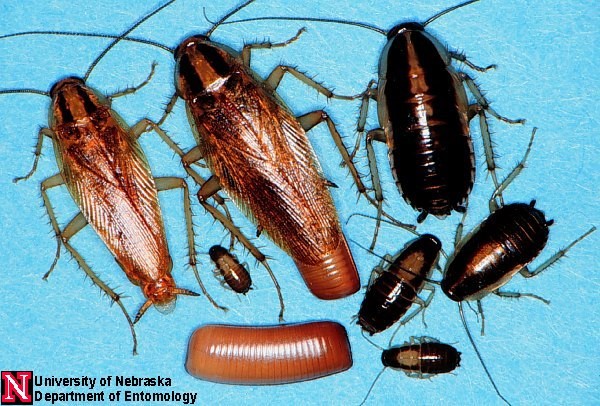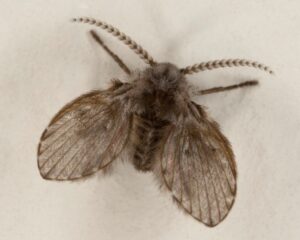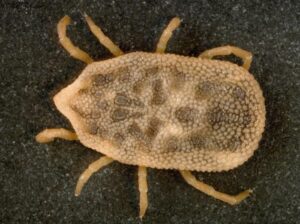American Cockroach
General Description
Adult
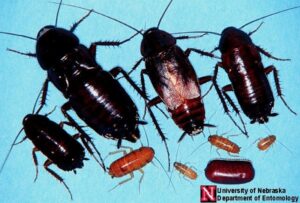
- One and one-third to 2.5 – 4 cm long.
- Reddish-brown, with a light-colored ring along the edges of the pronotum.
- Male wings cover the tip of the abdomen, female wings do not.
Nymph
- Smaller than adults (size depends on how many molts they have been through).
- Small nymphs grayish-brown, larger nymphs redlish-brown.
- Wingless.
Life Cycle and Common Characteristics:
- The American cockroaches are the largest common building-infesting cockroach species, especially in manholes.
- The female drops her egg capsule (ootheca) within a day after it is formed. Sometimes it is dropped near a food source or in a protected area.
|
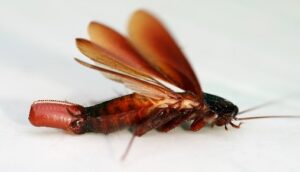
Toby Hudson |
- Nymphs hatch after 50 to 55 days.
- Each nymph molts 9 to 13 times to reach maturity.
- Nymphal stage requires 160 – 900 days to complete, depending on environmental conditions.
- Adult females live up to 15 months.
- Adults may live for 3 months without food and 1 month without water.
- Adults favor warm, moist habitats, often close to the ground or even underground.
- Cockroaches favor warm, moist habitats, often close to the ground or even underground.
- Indoors, they are often found in damp basements, crawlspaces, pipe chases, steam tunnels, and floor drains.
- In schools, they are often abundant in locker rooms and near pool areas and may inhibit water heaters, furnaces, and other warm, moist places.
- They can live outdoors during warm months, around dumpster areas, or near access to sewers.
- This species feeds on a variety of foods, but favors decaying organic matter and starchy materials.
- American cockroaches rarely fly unless temperatures exceed 45°C. During hot weather outdoors they can be very active flyers.
Damage and Medical Implications
- Cockroaches can be detected by their obnoxious odor or damage, or by the fecal matter (called frass) that they produce or deposit. These clues can aid in diagnosing a cockroach problem.
- Cockroaches are unlikely to bite humans because their mouthparts are not large or powerful enough to inflict a “bite”.
- The cockroach damage is a result of their habit of feeding and harboring in damp and unsanitary places, such as sewers, garbage disposals and damp and unsanitary areas of kitchens, bathrooms and indoor storage areas.
- Cockroaches spread filth and germs from these sources onto food supplies, food preparation surfaces, dishes, utensils and other surfaces.
- Cockroaches contaminate far more food than they eat.
- Because of the odor imparted by cockroaches, most people are disgusted and repulsed by their presence.
- Cockroaches produce odorous secretions from various points in their bodies, and these secretions can affect the flavor of foods.
- The presence of cockroaches constitutes an important source of health-threatening allergens and can even trigger life-threatening asthma attacks.
- Different forms of gastroenteritis potentially may be diseases transmitted by cockroaches. These include salmonella food poisoning, nausea, abdominal cramps, vomiting, diarrhea, dysentery and other illnesses. The organisms causing these diseases are carried on the legs and bodies of cockroaches, and are deposited on food and utensils as cockroaches forage.
- Cockroach excrement and cast skins contain a number of allergens to which many people exhibit allergic responses, such as skin rashes, watery eyes and sneezing.
- Cockroaches are not associated with severe illnesses or disease outbreaks.

